Does the IPO herald a new dawn for Twitter?
How can Twitter grow to satisfy investors after the IPO? Is change essential, will it foster much-needed engagement or does it come at a cost?
 Over the past couple of years I have found myself going in circles when writing about how Twitter might develop; ideas that seemed fanciful wishes might actually become a semblance of reality. In the run up to its IPO, the company is making the news on a regular basis with much of the focus around how it will make money for potential investors, if at all, and whether a new design or functionality may contribute to this.
Over the past couple of years I have found myself going in circles when writing about how Twitter might develop; ideas that seemed fanciful wishes might actually become a semblance of reality. In the run up to its IPO, the company is making the news on a regular basis with much of the focus around how it will make money for potential investors, if at all, and whether a new design or functionality may contribute to this.
When the company's S-1 filing revealed that there were only around 50 million monthly US users and that mobile growth seemed to be stagnating (a worrying sign for a "mobile first" company) talk, obviously, turned to growth, where it might come from and how it could be achieved.
Mainstream
Some tech news outlets took to wondering if Twitter would ever become mainstream but, as I wrote before, being mainstream isn't just about the number of users but exposure to data and how engrained into our daily routine a service can become.
Just as when Google+ was accused of being a ghost town, seemingly low monthly active users isn't necessarily cause for alarm just yet (numbers did increase slightly in the latest figures albeit at a reduced rate) but the network does still need to expand its user base and this is indeed a challenge.
As Josh Costine pointed out over at Techcrunch Twitter's very nature could be part of its problem.
I first asked if Twitter needed to change at the beginning of last year and, while it is widely acknowledged that filtering the main Twitter feed would be a bad idea, you have to wonder about other options to both present and consume the data.
Visual
It was reported recently that Twitter is working on the next, more visual, revision of the service with new mobile apps to enhance the user experience. Part of this reworking is said to be the removal of the #discover tab in favour of a more media led main feed. If #discovery is to be removed, how much of its functionality is going to pass to the primary stream?
Part of my original idea for change was iteration of the #discover tab and for it to become the default view - the main, unaltered feed would still be available. Are we seeing the network take a similar approach but by merging #discover with the main feed?
I have no doubt that #discover would have been far more popular if it had not been a secondary view.
Contradiction
Twitter falls victim to contradiction: it knows it needs more engagement, which is why we have the conversation view, but the current appearance is not very engaging. I have previously referred to it as being "awash in a sea of links".
At the risk of repeating myself, there needs to be enhanced discovery to allow people to find interesting content. In this context many tweets would become almost comments on those discovered items - a ready-made conversation starter.
The new @eventparrot account illustrates that although Twitter is already a real-time broadcast network it needs to make better use of the data and actually get it in front of people. By sending notifications of breaking news events via Direct Message you not only engage those who are currently online but also, because many will have either email or SMS alerts set up for DMs, draw people back to Twitter to see what's going on.
The company now also allows you to receive DMs from anyone who follows you without the need to follow them back first. This is opt in (at least for now) and is obviously designed to increase engagement (especially for brands) but could be a double-edged sword as it leaves the door open to increased message spam.
It would appear, however, that Twitter may have tried to preempt this as some are reporting that most links can no longer be included in DMs, although this could be a glitch or the first signs of a complete messaging revamp.
It's in the cards
 A new visual approach will make much greater use of Twitter Cards and the network has been sowing these seeds for a while. Things could go further.
A new visual approach will make much greater use of Twitter Cards and the network has been sowing these seeds for a while. Things could go further.
If more media is going to be available pre-expanded and visible in the stream then Twitter could work with e partners to provide better text summaries of news items and, maybe, allow more characters.
We are not online 24 hours a day and often miss breaking news (especially in other time zones) so why not utilise cards to summarise key tweets while you were away? Resurfacing popular or breaking content from when users were offline could be a good way of kick-starting a new wave of engagement.
Management
As has been demonstrated time and time again, people are usually terrible at managing their social circles: lists are underused on Twitter, Circles are poorly managed on Google+ etc. To counter this could Twitter benefit from employing Facebook-esque smart lists? Would automatic classification of some of our connections into pre-defined groups help us manage our feed more effectively?
Twitter placed the hashtag firmly in our minds but has since seen its implementation surpassed by the likes of Google+ inserting up to three related hashtags automatically. While Twitter has maintained its simplicity this could have been working against it.
The network could take advantage of the automatic application of related hashtags for enhanced discovery and extend the conversation especially when a tweet is identified as relating to a trending topic.
With an increasing amount of data appearing outside of the body of a tweet can the network start adding meta data of this nature to cards? It was always argued that all data had to be retained as parts of the tweet body because of those using the network via SMS but with the increased prevalence of smartphones running applications capable of displaying this data is it time for Twitter to give in or, at least, offer a two-tier service with available functionality scaling to your method of use?
All will be revealed
Twitter has been trickling out new small features regularly in the run up to IPO no doubt in an attempt to convince the market that it is innovating and has more tricks up its sleeve.
It is unlikely we will see any major changes before the company goes public as there is a danger that drastic action could negatively affect the opening share price. Although this will be a risk at any point post IPO, after the Facebook fiasco, there is a need to make a good initial impression.
Twitter has plenty of options to modify the service in an attempt to increase engagement but it all depends how far it is willing to go without over-complicating the service or alienating existing users.
Twitter going mainstream by not being social.
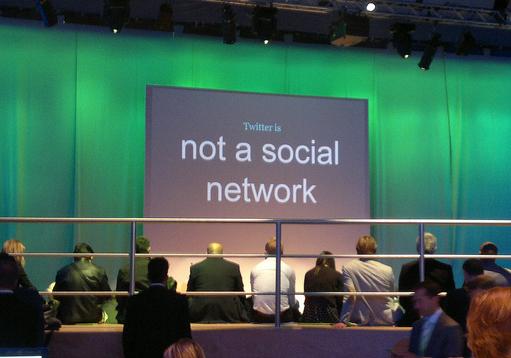 It's hard to believe that it was over five years ago that I started talking about social media's dream of going mainstream.
It's hard to believe that it was over five years ago that I started talking about social media's dream of going mainstream.
I said that it would happen when social services became part of everyday life, part of what we normally do and sat invisibly in the background.
We can talk all we want about having billions of accounts but numbers are only part of the story; we need to look at how services are used. Twitter, more than the others, seems to finally be achieving this new status with the likes of TV agreements (making it the second screen network of choice) and the recent announcements of instant NFL replays and crisis alerts.
By being a data channel rather than a social channel (albeit one that allows for social interaction) Twitter is positioning itself as a bite-sized traditional media style service for the Internet age.
Context
Service updates such as the recent conversation view keep us in the social mindset but the new ethos leading up to the IPO involves making Twitter a point of discovery for anyone with or without the need to actually be social.
Social discovery is something I've been going on about for a while, especially in the context of Twitter. The service has needed a way for new users to be able to find interesting content and things that matter to them in order to invest in the platform and, possibly, start tweeting.
The #discover tab started moves in this direction but didn't iterate as much as expected. The rumours that it will be shelved in a future update is, therefore, not that surprising but a better alternative must be found.
Why Twitter?
You can see what Facebook was trying with Home: altering the context by taking your social content outside of the social sandbox. Facebook was also first to have strong connections to the 'normal web' with the Open Graph so why is Twitter the social network that seems to be making the biggest "mainstream" inroads?
There are two factors, in my opinion, which have caused Twitter to lead the way:
- its innate simplicity, even after UI & service changes, and
- the deals it has done for content originating outside of the network
Here is the news
Twitter made it's public mark as the go-to home of real-time, crowd sourced news as far back as May 2008 when a massive Earthquake hit China. On the ground reports from normal people "as it happened" far faster than normal media channels could manage made the world sit up and take notice of a service that had been previously seen as just a geek playground or a passing fad.
I remember watching Robert Scoble collating all the information he could find and retweeting it to the rest of us mere seconds after being published - it's a small world on Twitter!
Events such as this led many to view social, especially Twitter, as an RSS replacement years before Google decided to sunset Reader. Not only could you follow the accounts from your favourite blogs (who would be tweeting their posts) but get the thoughts of others and a wider context all in one place.
Bring this right up to date and you have shared links served up within Safari on iOS7 - social news without the need for a social app. Some have criticised Apple and Twitter for tucking this away in Safari Favourites but they are thinking "socially" rather than as Joe Public - there is a different mindset at work.
By the back door
I used to say that social would go truly mainstream via the back door (by incorporating it into our normal daily tasks) and this certainly appears to be the way we are heading with the current shift in focus.
Twitter is embracing the non-tweeters with content while Google+ seeks to expose itself to a wider audience via it's commenting service. The trick is to latch on to whatever people already enjoy doing and add a social element without placing too much of an imposition upon the user.
Twitter seems to be closest to finding the right balance.
This post is an updated version of one that originally appeared on Google+ here.
Image by whatleydude
Author Rank and the changing face of Facebook.
Social networking is big business and much is made of the positions and strengths of the major players such as Facebook and Google.
I was recently sent an email by Vincent Schmalbach promoting his post "Author Rank: Larry Page's Nightmare" in which he likens Facebook's EdgeRank algorithm with the concept of Google's Author Rank.
I cannot agree with the starting point of his piece, for the reasons stated below, but he does raise a few interesting questions.
EdgeRank is not author rank for Facebook
 EdgeRank is an automated relevance engine based on behaviour: it observes who we interact with, what we like, the types of post we most engage with, etc. and works to show us more of the same thus hoping to pique our interest and enhance our engagement - the overriding aim is to remove irrelevance and provide a better experience in our News Feed.
EdgeRank is an automated relevance engine based on behaviour: it observes who we interact with, what we like, the types of post we most engage with, etc. and works to show us more of the same thus hoping to pique our interest and enhance our engagement - the overriding aim is to remove irrelevance and provide a better experience in our News Feed.
Author rank (according to patents) seeks to determine the relevance of individual authors to specific search queries and promote those with the most authority within search results. EdgeRank is far more personal.
Once Open Graph data is available via Graph Search, however, a form of author rank could be employed by surfacing web content with the most likes/external Facebook comments as relates to the search query and this is where Vincent's notion of transferring "EdgeRank to web search" comes in to play but, as it stands, this will be more personal than a strict Author Rank.
Search
As I have said in the past, Facebook is outsourcing its search engine index to users via Open Graph but, again, it is a relevance engine: it is not an index of everything but an index of everything that mattered enough to Facebook users that they felt compelled to Like or comment.
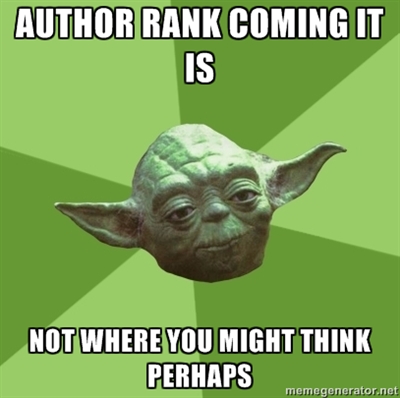 One thing Vincent and I do agree on is that Bing's social search initiatives could be a serious competitor for Google with regards to Author Rank and Open Graph data from Facebook could play a large part via nodes, connections and relationships. Unlike Bing, however, Facebook is not currently after definitive external data sources but about likes, interests and influence.
One thing Vincent and I do agree on is that Bing's social search initiatives could be a serious competitor for Google with regards to Author Rank and Open Graph data from Facebook could play a large part via nodes, connections and relationships. Unlike Bing, however, Facebook is not currently after definitive external data sources but about likes, interests and influence.
There is massive potential within Facebook but it exists in a state of dichotomy; on one side we have EdgeRank and Graph Search promoting relevance but, on the other, Facebook is constantly criticised for the complete lack of advertising relevance as though our interest data is being completely ignored.
Work is needed to make better use of the data held by the social behemoth.
Facebook's changing face
Much of Facebook's problem is that its social model, the traditional friending model, is becoming less relevant in the wider context of other services across the social web.
Social platforms have an increasing propensity towards discovery rather than just connecting:
- Twitter's #discover tab and continued use of hashtags
- Instagram and Foursquare explore options
- Google+ communities, automatic and related hashtags
While it is seen as copying other services, Facebook is having to change and adapt to the new social paradigms and this is what we have started to see recently. Be it something simple such as Subcriptions or, coming up to date, Graph Search this is now not the look of a network that relies solely on people connecting with those they already know.
What not who
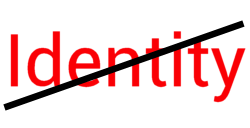 Despite what we may tell ourselves, the business of social is increasingly less about existing relationships but more about establishing connections or edges and what tiny signals might possibly be inferred or extrapolated from even the most innocuous of actions.
Despite what we may tell ourselves, the business of social is increasingly less about existing relationships but more about establishing connections or edges and what tiny signals might possibly be inferred or extrapolated from even the most innocuous of actions.
It's not who you are but what you do, where and when you do it, who you do it with and how they share that experience.
Facebook used to care who you were as that determined why family and friends might want to join and connect with you; your real identity was important. Now, however, things are shifting and changing focus.
I said a while back that Twitter didn't care who you were, Facebook cared a lot and Google wasn't bothered as long as you were consistent. The reality now is that all social properties require that element of consistency so that users can be effectively targeted with advertising etc. either directly within the network or within connected services.
The need to know exactly who we are is diminishing as long as we always have the same identity, be it real or not.
The role of social
So, if identity is not strictly as important as it was, social platforms will have little interest in becoming true identity providers but merely identity services. Rather than wanting social identities to be our digital passport it needs to be more our entry ticket.
Take your seat.
What if Twitter introduced native chats?
Twitter chats are an extremely popular, and many say powerful, way to utilise Twitter for specific topic discussion and it is, perhaps, surprising that the network has not made strides into this area. What if Twitter chats went native?
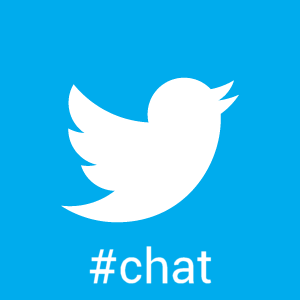 I have made no secret of my recent personal dissatisfaction with Twitter, not as a product but as a medium in which I can express myself and obtain sufficient social value.
I have made no secret of my recent personal dissatisfaction with Twitter, not as a product but as a medium in which I can express myself and obtain sufficient social value.
In case you missed it: I can't.
Facilitator
It was over five years ago that I first said "Twitter is a facilitator":
It facilitates connections, friendships, citizen journalism but what is really doesn't facilitate is conversations in situ.
Twitter Chats became the de facto way to get round this but there has been a lot of noise in certain quarters about chat applications closing because they were "killed" by changes to the Twitter API.
Twitter Chat applications manage topics by focusing on a single hashtag, only displaying tweets with that tag and then auto-appending the tag to any tweets you make from within it - this is reminiscent of my original ideas for Twitter channels.
I'm still of the opinion that Twitter needs to move beyond the core feed experience and, unlike my suggestion of integrating Branch, need not sacrifice simplicity to do so.
In house
 Much to the chagrin of third-party developers, Twitter has a history of taking user-built functionality and incorporating it into the service. Hashtags, retweets, cashtags, URL shortening, an image upload service - the list goes on - all went in-house after proving to be popular with users.
Much to the chagrin of third-party developers, Twitter has a history of taking user-built functionality and incorporating it into the service. Hashtags, retweets, cashtags, URL shortening, an image upload service - the list goes on - all went in-house after proving to be popular with users.
Social discovery is key for social growth.
We have seen iterations to the #discover tab and search improvements (although neither were as ground-breaking as they might have been) but discovery and focus is still an issue.
Twitter tested Event Pages which promised to be an effective way of natively following a single topic but these disappeared, never to be heard from again.
Video
 With Vine and the recent announcement of TV ad targeting it is apparent that the company feels video is a good direction to take its service but what about a potential next step: video chat?
With Vine and the recent announcement of TV ad targeting it is apparent that the company feels video is a good direction to take its service but what about a potential next step: video chat?
Skype, Google+ Hangouts and Facebook Video Calling all point towards a common destination for social with Hangouts really serving to prove the popularity of multi-participant, face-to-face communication which has yet to be matched elsewhere.
Could video chat work within the context of Twitter? Is there room within the established market for another video conferencing service? I believe so, yes as heavy Twitter users would probably relish being able to enhance their connections, just as Google+ users do, without having to leave the network.
Could Twitter purchase a company such as ooVoo which already supports multi-participant chat, recording and a Facebook app?
Native Twitter Chats?
As stated above, chats are an extremely popular way to focus on specific interests whilst working within the Twitter environment and I feel it is a prime example of user-led functionality that could be incorporated into the network.
As third-party applications remove the conversation from the stream, any solution would need to emulate this so what if Event Pages could be reborn as native chats?
To extend this idea, what if Twitter allowed for creation of scheduled "chat events" with reminders and notifications?
What if Twitter introduced "Chats on Air" with core participants in a group video chat sat at the top of the event page while others contribute, as at present, via tweets?
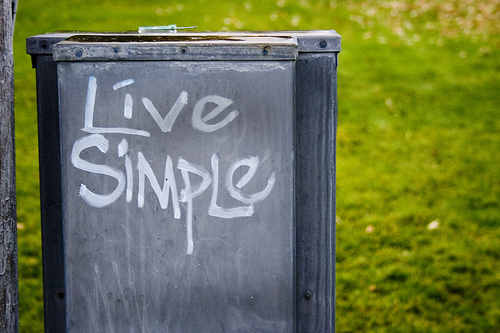 Keeping chats limited to tweets would maintain consistency with the "simple" mantra championed by management which would, no doubt, preclude the inclusion of Branch-like discussions and long form posting despite the acquisition of Posterous in March of last year.
Keeping chats limited to tweets would maintain consistency with the "simple" mantra championed by management which would, no doubt, preclude the inclusion of Branch-like discussions and long form posting despite the acquisition of Posterous in March of last year.
Community
Building Twitter communities is currently big news with services such as Nestivity giving users ways to engage followers in a more meaningful fashion. Providing native chats, with or without video, would serve to enhance community building whilst negating the need for users to go off-site.
Images by derekbruff, swanksalot, Katie@!
What next for Twitter?
 Twitter is doing well for itself with burgeoning user numbers, ever more tweets, increasing revenue from advertising and the introduction of new functionality such as the #discover tab and Twitter Cards.
Twitter is doing well for itself with burgeoning user numbers, ever more tweets, increasing revenue from advertising and the introduction of new functionality such as the #discover tab and Twitter Cards.
I have long been asking, however, if things needed to change.
I suggested a form of channels to sanitise the stream and keep topics contained which "Event Pages" seemed to agree with but then disappeared as quick as they appeared.
I thought that Twitter could iterate and develop the #discover tab, using it as the default view or a focal point for content discovery.
I also recently proposed the idea of buying and integrating Branch to add an additional level of conversation to the mix.
Depth
Twitter is a media darling, unbeatable for real-time discovery and breaking news, but I have personally felt that there needs to be something extra to back this up; something to let users take it to the next level and translate discovery into discussion - a way to get more in-depth.
Prior to the launch of Google+ I was of the opinion that Google suffered from having no "destination" as its primary business was all about getting you to go elsewhere and leave the Google ecosystem behind.
I wonder if Twitter is looking at a similar situation now that the stream is full of links.
I keep asking the same questions:
- is the stream enough?
- will it continue to hold the attention?
- will it be engaging enough for users?
- does the network need more?
Many wondered about the possibilities once Twitter acquired Posterous and I am still of the opinion that there is an opportunity to extend Twitter's functionality and remit in a way that goes beyond 140 characters, away from the main stream.
But yesterday I had a realisation, a moment of clarity.
Twitter, it's not you, it's me.
 My mindset has changed and I can no longer think in 140 characters but am I just an edge case?
My mindset has changed and I can no longer think in 140 characters but am I just an edge case?
When I first heard about, and then joined, Twitter back in 2006 I knew we were on the cusp of a new era of social. The service excited me in a way that MySpace and others had never been able.
For the past couple of years, however, I have been in two minds about the social/information network with my desire to see something else on the one hand whilst declaring its simplicity as its key for success.
Longevity
Having existed for over seven years with a largely unaltered recipe, history would appear to suggest that Twitter has a winning formula so why should it need to shake things up to cater to the likes of me?
Previous changes to the service have been absorbed and embraced by users as they have left core functionality largely unaffected but I keep wondering if living the simple life is enough to sustain the network in the long-term.
While I will still use Twitter it will no longer be a social priority but my concern for the network is that I can't be the only one thinking this way.
